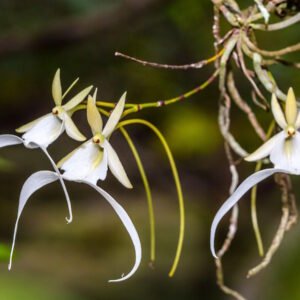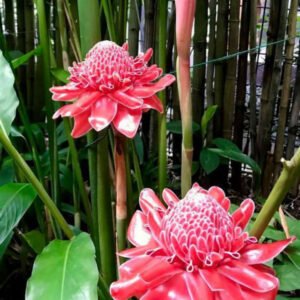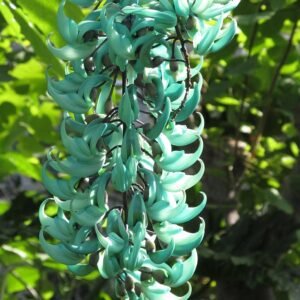Common Name: Monkey Orchid (also known as Monkey Face Orchid)
Scientific Name: Dracula simia
Family: Orchidaceae (Orchid family)
Origin: Cloud forests of Ecuador and Peru, typically at elevations of 1,000–2,000 meters (3,300–6,600 feet)
Physical Description:
-
Flowers:
The Monkey Orchid gets its name from its striking resemblance to a monkey’s face, complete with what appear to be eyes, a nose, and a mouth in the center of the flower.
The blooms are typically reddish-brown, orange, or maroon, with a fuzzy texture and often a long, trailing tail on each of the three sepals.
It blooms at any time of the year under the right conditions, though it is notoriously difficult to cultivate. -
Fragrance:
Unlike many orchids, Dracula simia is noted for its sweet citrus-like fragrance, often likened to ripe oranges. -
Leaves:
The plant has long, narrow, leathery leaves that grow in a fan-like arrangement. It is a terrestrial to epiphytic orchid, meaning it can grow on the ground or attach itself to trees in its native habitat.
Habitat & Growth:
-
Native to cool, moist cloud forests with high humidity, low light, and steady temperatures between 50–70°F (10–21°C).
-
Typically found growing in mossy, shaded conditions on tree trunks or forest floors.
Care Requirements (in cultivation):
-
Light: Prefers low to medium light; no direct sunlight
-
Temperature: Cool-growing orchid, sensitive to heat
-
Humidity: Requires high humidity (70–100%) and good air circulation
-
Water: Needs constant moisture—best grown in sphagnum moss or fine orchid bark in a humidity-controlled environment like a terrarium
Symbolism & Appeal:
-
Symbolism: Represents curiosity, playfulness, and natural wonder due to its unusual and humorous appearance.
-
Collectibility: A favorite among rare orchid collectors, though it is very difficult to find and maintain outside its native habitat.




Reviews
There are no reviews yet.